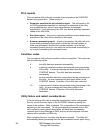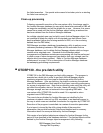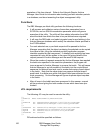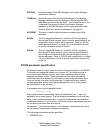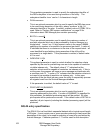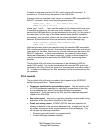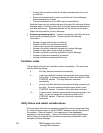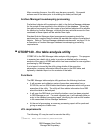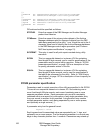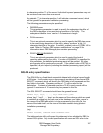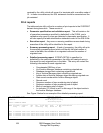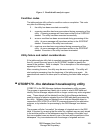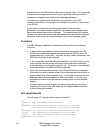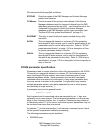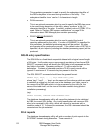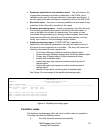106 DB2 Manager User Guide
StorageTek Proprietary
//*
//STEPLIB DD DSN=Database.Manager.load.library,DISP=SHR
// DD DSN=Archive.Manager.load.library,DISP=SHR
//*
//OTASxxxx DD DSN=Archive.Manager.index.dataset,DISP=SHR
//SYSIN DD DSN=Execution.parameter.file,DISP=SHR
//SQLIN DD DSN=Table.identification.file,DISP=SHR
//SYSPRINT DD SYSOUT=*
//*
DD entries should be specified as follows:
STEPLIB: Enter the names of the DB2 Manager and Archive Manager
product load libraries.
OTASxxxx: Enter the name of the primary index dataset of the Archive
Manager database used for storage of objects from the DB2
table being analyzed by the utility. ‘xxxx’ should be set to the 4-
character value used to identify the Archive Manager database
in the DB2 Manager control region procedure (see “Perform
MVS host system modifications” on page 21).
SYSPRINT: This entry is used for all print reports created during utility
execution.
SYSIN: This is a sequential dataset or in-stream JCL file containing
fixed-length 80 byte records, and is used for specification of the
parameters used to control utility execution. Refer to “SYSIN
parameter specification” on page 106 for a description of how
to specify parameter entries in this file.
SQLIN: This is a sequential dataset or in-stream JCL file containing
fixed-length 80 bytes records, and is used for specification of
the table to be processed by the utility. Refer to “SQLIN entry
specification” on page 107 for a description of how to specify an
entry in this file.
SYSIN parameter specification
Parameters used to control execution of the utility are specified in file SYSIN.
This must be a sequential dataset or in-stream JCL file containing one or
more fixed-length 80-byte records, each record containing one or more
separate parameter entries. Each parameter entry must be completely
contained within one record (ie) continuation of any single parameter entry
from one record to another is not permitted. A single record may contain
multiple parameter entries, each being separated by one or more spaces,
and optionally a single comma (‘,’).
A parameter entry has the general format:
keyword = value
Each keyword and its associated value are separated by an '=' sign, and
optionally one or more spaces. The first keyword parameter in a record may
begin in any character position from 1 onwards. Parameters may extend up



